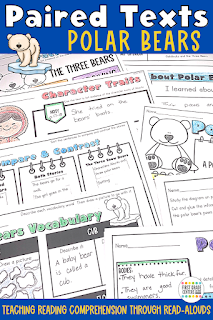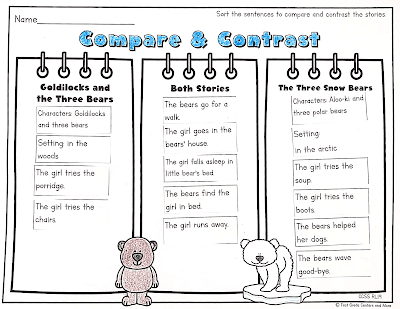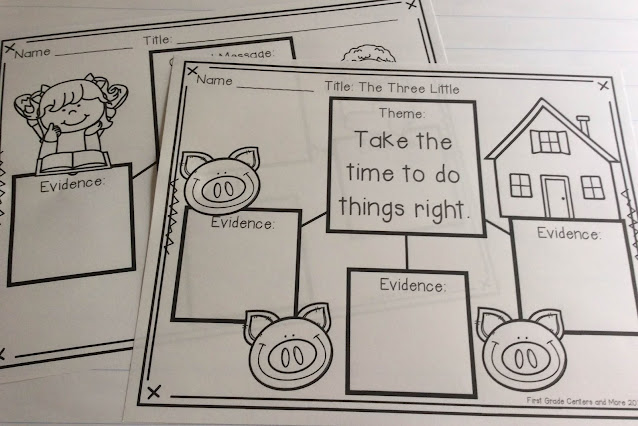Teaching theme can be a lot of fun in First Grade. I like to explain theme or central message to firsties this way, "What do you think the author wants you to learn from this story that you can use in your life?" It can be tricky, and takes LOTS of practice! Usually the students will say something very literal from the story at first. For example, in the story The Little Red Hen they might at first say something like "How to grow wheat!" But sometimes a student will say something so insightful it makes your heart flutter! So...how do we get them to that point!
I think a good place to start is telling students what the theme of a story is, and then modeling finding evidence in the story to support the theme. Here is an example from The Little Red Hen.
After reading aloud the story, I would display a graphic organizer like the one above, that already has the theme listed. I would read the story again, and stop along the way listing some events from the story that support this theme. At the end of the lesson the chart would look like this:
The next day, I would start with a similar chart (with the theme listed) for a new story. This time, students would help me find the evidence to support the listed theme.
I think folk tales are a great place to start. Here are some ideas of folktales and themes:
The Three Little Pigs- Take the time to do things the right way
Chicken Little/Henny Penny- Don't believe everything someone says, or Think things through before jumping to conclusions
City Mouse, Country Mouse- Home is the best place to be
After we have practiced together several times, then I would have students complete a graphic organizer on their own (with the theme already listed). Over time, with lots of modeling and guided practice, I will have students begin to determine the theme on their own. This is a skill that takes lots of time to develop, and we will revisit it over and over again throughout the year. Also, I think it is important to recognize that there can be more than one theme in a book, there isn't necessarily one "right" answer.
Another fun way to teach this skill is to choose a variety of books centered around one theme.
The books above all center around the theme of "Being different is good" or "Just be yourself".
Here are some additional books that I think are great for teaching theme.
Charlie the Caterpillar- like The Ugly Duckling, theme of not judging someone by how the look
Sylvester and the Magic Pebble- theme of being happy with what you already have
Hooway for Wodney Wat- theme of even though you are small, you can do great things
The Principal's New Clothes- theme of don't follow the crowd if you know it isn't right
Officer Buckle and Gloria- theme of the importance of working together
I've also included some graphic organizers for your students to use.
Download Theme Worksheets
Do you have any books you love to use to teach theme?


















































